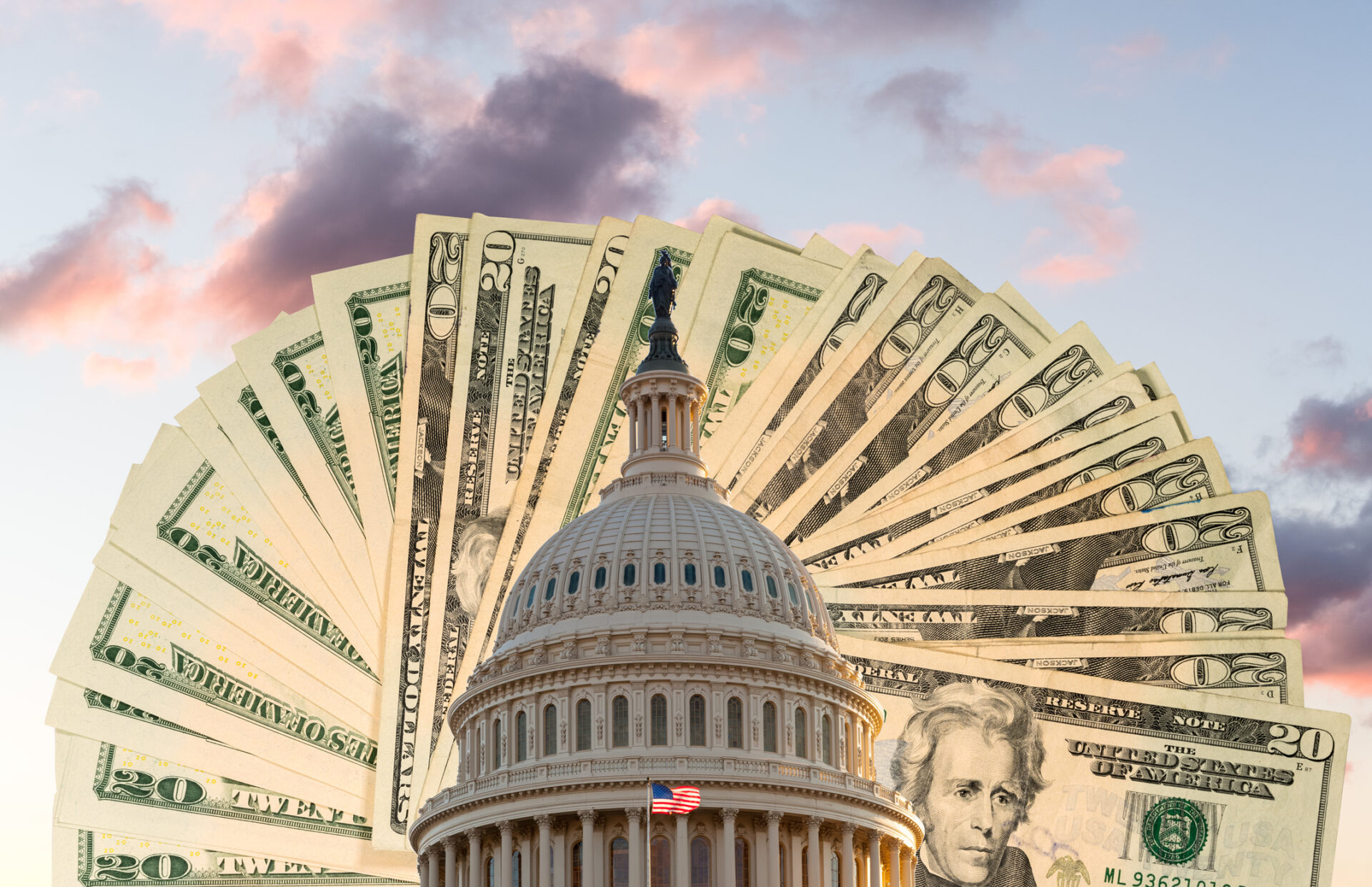
October 10, 2025
The stimulus would be funded from the revenues generated from the Trump Administration’s tariffs. In September alone, the U.S. government collected over $31 billion in tariff revenue.
A new report from Goldman Sachs reveals a sobering picture: more people are living paycheck to paycheck. As more Americans struggle to pay for housing, food, and transportation, President Donald Trump is considering giving Americans a $2,000 stimulus check funded by tariffs.
“We’re going to do something, we’re looking at something. No. 1, we’re paying down debt. Because people have allowed the debt to go crazy,” the President said during an interview on One America News.
He added, “We also might make a distribution to the people, almost like a dividend to the people of America. “We’re thinking maybe $1,000 to $2,000 — it’d be great.”
The stimulus would be funded from the revenues generated from the Trump Administration’s tariffs. In September alone, according to Fox News, the U.S. government collected over $31 billion in tariff revenue, which is $73 million below the August record. So far in 2025, the Treasury Department says the U.S. has collected nearly $215 billion in tariff revenue.
Debts Rising In The United States As Trump Touts Tariff-Funded Stimulus
Goldman Sachs’s latest study found that Americans are stretched thin. An estimated two-thirds of those surveyed say they are struggling to make ends meet between paydays. Economists say the reason for the financial insecurity is due to “sticky inflation,” elevated interest rates, and slower wage growth.
Inflation has reportedly cooled somewhat, down from the highs recorded in 2022, but prices are above pre-pandemic levels.
“Many households aren’t in crisis, but they’re stretched thin,” the report states. “The lack of savings and reliance on credit cards to cover monthly bills creates long-term vulnerability.”
Even more alarming in the report is the finding that low-income families are not the only ones feeling the financial strain. High earners are also reported to have very little savings buffer, which reflects mounting costs.
Report authors also note that 55% of workers may be living paycheck to paycheck by 2033, and 65% by 2043, raising the question of whether retirement is becoming unaffordable for many.
“The cost of major life events is taking up a larger percentage of household income, a trend that affects workers at the lowest level of income as well as the highest,” said Greg Wilson, the head of retirement with Goldman Sachs Asset Management.
He warns that if more Americans don’t seek out retirement income strategies to close their savings gap, then “retirement may increasingly become unaffordable for too many workers.”
RELATED CONTENT: Elevating Your Excellence: COO Teri Williams Is Closing America’s Racial Wealth Gap Through Banking


